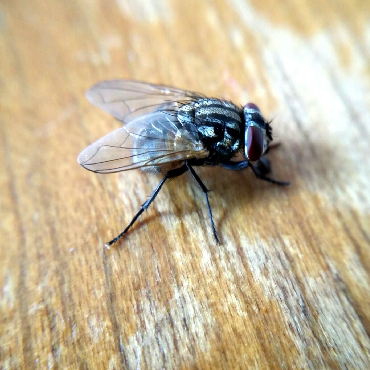Expert Flies Management
Flies Management
There are more than 120,000 species of flies worldwide.A female housefly can lay up to 600 eggs in her short lifetime.Most flies live an average of 21 days and take on various shapes throughout their short lives. The life cycle have 4 stages i.e. Egg, larvae (Also known as maggots) , pupae and adult. Flies don’t have mouthparts to chew. Instead, they spit out enzymes that turn solid food into a liquid that they can consume. Flies infestation can spread too fast. For example a single female house fly can lay up to 500 eggs over the span of just three to four days and repeat the cycle multiple times throughout her life. House flies typically live 15 to 25 days, but can survive up to two months under optimal conditions.
The major species which are considered as Pests are houseflies, bottle flies, flesh flies, fruit flies, phorid flies,drain flies etc. These are scavengers which mainly feed on decaying organic waste


Why are they considered as Pests
Since house flies regularly feed and lay eggs on feces, garbage, decaying animals, and other filthy places, they can transfer disease-ridden microbes when they land on humans, household surfaces, and food that has been left out. Because of this, many fly species are known to spread disease to humans. In fact, the common house fly is suspected of transmitting at least 65 diseases to people, like Dysentery, Diarrhea, Cholera, Typhoid fever, Leprosy
Sign of Flies Infestation
How to we Prevent them
 The best way to deal with a housefly infestation is to prevent it in the first place. Make sure they don’t have areas to lay eggs and remove things that can attract the flies.
Make sure your windows, doors, and house vents are sealed properly and free from holes or other damage.
The best way to deal with a housefly infestation is to prevent it in the first place. Make sure they don’t have areas to lay eggs and remove things that can attract the flies.
Make sure your windows, doors, and house vents are sealed properly and free from holes or other damage.
 Ensure there is no overripened fruits and vegetables kept.
Ensure there is no overripened fruits and vegetables kept.  Store food properly in airtight containers.
Store food properly in airtight containers. Don’t leave dirty dishes or glasses out on the counter.
Don’t leave dirty dishes or glasses out on the counter. Don’t leave grass clippings or leaves out to decay near your house.
Don’t leave grass clippings or leaves out to decay near your house. Turn off outdoor lights at night when possible. Flies are attracted to light.
Turn off outdoor lights at night when possible. Flies are attracted to light. Clean up animal feces, such as in a cat’s litter box, right away.
Clean up animal feces, such as in a cat’s litter box, right away. For commercial space restricting entry through mechanical methods is strogly suggested installation of air curtains, strip curtains.
For commercial space restricting entry through mechanical methods is strogly suggested installation of air curtains, strip curtains.
Treatment Options
As a DIY option its very difficult to manage Flies once the infestation gets established. Hence, its recommeded to hire a professional Pest management agency to manage the issue. Treatment of flies infestation varies from species to species. The key to success is to find out the route cause which is the breeding spots as it can varry. Flies mainly breeds on decaying organic matters for example fruit flies mainly breeds in decaying fruits and vegetables, flesh flies in decaying dead organisms, house flies in decaying garbage area, drain flies in drain lines. hence, the source needs to be identified and treatment is needed on larval stage.
Adults can be managed through residual spray and misting in key resting areas. Other treatment and control methods include installation of fly killer and fly cather machines and use of fly bags in highly infested areas like STP , ETP. Treatment comprises Weekly baiting or spraying of chemicals in adult resting locations and anti-larval in areas wherever breeding spots will get identified.
